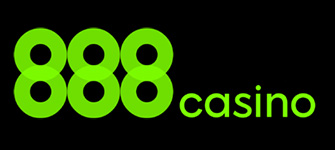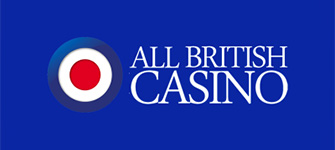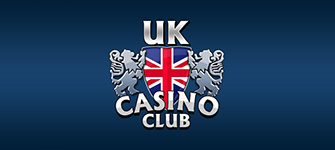Atlantic City Blackjack
Not all blackjack games are as generous and liberal as Atlantic City Blackjack. The game showcases all the standard rules of conventional blackjack and is one of the blackjack variants that allows a late surrender.
The variation emerged after the state of New Jersey legalized casino gambling in Atlantic City in an attempt to boost tax revenue. Blackjack, along with other casino games, arrived on the East Coast in the late 1970s when the first legal casino in the state, Resorts Atlantic City, opened doors.
Before that, legal gambling was restricted solely to the state of Nevada. Atlantic City gambling operators soon realized they had to come up with ways to attract visitors and remain on par with competing Las Vegas casinos. The betting action of locals was simply not sufficient to support several casinos around the year.
The operators came up with the idea to tweak the rules at their blackjack tables so that they appeared more beneficial to patrons. This led to the introduction of more liberal playing conditions that were unavailable everywhere else.
The idea paid off and soon hordes of blackjack fans began flocking to the floors of Atlantic City casinos. The game of 21 soon became a staple in Atlantic City’s gambling venues, along with other classics like craps and roulette.
- ✓ Basic Rules
- ✓ Deck Number
- ✓ The Fixed Dealer Rules
- ✓ Payouts and Winning Criteria
- ✓ Possible Moves for the Player
- ✓ Early and Late Surrender
- ✓ Table Limits and Posting Bets
- ✓ Recommended Strategy and House Edge
- ✓ Strategy Hints
- ✓ Atlantic City Blackjack Goes Online
You can find tables with this set of rules throughout Atlantic City. In the mid-1990s, the popular variation became available for online play with the emergence of the first virtual casinos. Today, players no longer have to travel great distances to enjoy Atlantic City Blackjack.
If you do not feel like travelling to New Jersey to gamble, numerous online casinos also offer the game. Some of the most played online variants of Atlantic City Blackjack are supplied by major software developers like Microgaming, Red Rake, and iSoftBet.
Basic Rules
On the surface, Atlantic City Blackjack is no different than most of the other classic variations of the game. The purpose of the player is to beat the dealer by getting a hand whose total is the closest to 21 without going over. The dealer will give each player two cards, placing them face-up in front of each player’s corresponding betting spot.
Players are not permitted to remove their cards from the table or even touch them. The dealing starts at the leftmost side of the dealer and finishes with the player seated at the rightmost betting spot. After they are done with the players’ starting hands, the dealer would deal two additional cards for themselves.
One of them is exposed so that players see its value while the other one is kept face-down. This is the dealer’s hole card which is flipped over once the players are done with the hands. Each hand has a certain total that is summed up by adding the value of each individual card in that hand. For example, if you have a 5 and a 6, then you have a starting total of 11.
The ranking of the cards coincides with that in all other blackjack variations. The value of each card is determined by its denomination rather than its suit. Suits in Atlantic City Blackjack make no difference to the game.
Aces can be counted as 1 or 11, depending on what is best for the particular hand. The values of cards 2 through 10 correspond to the number of pips they have at the front. All face cards (King, Queen, and Jack) share a common value of 10. Hands that contain an ace that can be counted as 1 or 11 are referred to soft hands. An example is A/5, which can be treated as 6 or 16, based on the holder’s preferences.
Deck Number
One of the rule changes that set Atlantic City Blackjack apart from other variations has to do with deck number. This one was intended to slightly decrease the advantage the other liberal rules gave to the players.
Unlike Las Vegas casinos where the game is dealt either from 4 or 6 decks, Atlantic City Blackjack is played using 8 full pre-shuffled decks, each holding no less than 52 cards. The cards are dealt out of a device called a “shoe”. When the first New Jersey casinos opened doors, they initially dealt out their blackjack games out of six-deck shoes.
The higher deck number was introduced later on as a precaution against advantage players who quickly flooded the floors of Atlantic City casinos, attracted by the new liberal rules. The gambling operators reasoned that it would be far more difficult for versed players to count into eight decks.
They were wrong but this is another story. The main point here is that the eight decks gave casinos a greater edge because it increased the game’s variance. This way a cold table could remain cold for a longer time. Naturally, the opposite was also true but the operators quickly found a way to solve the issue with sporadic shuffling of the decks and prohibiting mid-shoe entries.
The Fixed Dealer Rules in Atlantic City Blackjack
Atlantic City Blackjack is an American hole-card game since the dealer receives one of their starting two cards face-down. The dealer takes a peek at their hole card when their face-up card is either an ace or a ten. This is generally favorable for the players.
The other major rule change that distinguished Atlantic City’s tables from those in Las Vegas was the dealer’s obligatory standing position. Dealers in Sin City were normally required to stand on all 17s. Meanwhile, the dealers on the East Coast had to hit soft 17 (a 6 and an ace that can be valued either as 1 or 11). This gave them an extra chance of beating players with higher hand totals like 18 or 19.
Many gambling venues in Atlantic City still require their dealers to abide by the H17 rule although few have introduced S17 tables as well. Most of the online variations of Atlantic City Blackjack that we know of also use the S17 rule. Blackjack dealers can either hit or stand on their hands. They cannot split pairs, surrender, or double down. These moves are reserved exclusively for the player.
Payouts and Winning Criteria
There are several ways to win in Atlantic City Blackjack, the first one being with an actual blackjack. Also called a natural 21, this hand refers to the player having an ace next to one of the ten-value cards (10, King, Queen, or Jack) immediately after the initial deal. We only specify this because some inexperienced players seem to assume any total of 21 is a blackjack, which it is clearly not.
A player with a blackjack will win automatically unless the dealer, too, has a blackjack. In the latter scenario, the two blackjacks will push and the player will neither lose nor win. Wagers on pushed hands are returned to their respective owners. In the event of a blackjack, the player is paid at higher odds of 3 to 2.
Another way to beat the house is by having a total greater than that of the dealer without going over 21. In this case, you receive an even-money payout, or 1 to 1. For example, if you have a hand of 19 (eg. Jack, 9) with a $10 bet while the dealer only has a 17, you will win a total of $20 (your original $10 plus $10 on top of that). The third way to win in Atlantic City Blackjack is if the dealer goes over 21 (busts) against an unbusted hand of the player. Again, you are paid at odds of 1 to 1 in this case.
Possible Moves for the Player
- Hitting is when the player asks the dealer for more cards should they wish to do so. There is no actual limit on how many times a player can hit a single hand as long as they do not go over 21. The dealer can hit as well although they should do so according to the house’s fixed dealer rules (H17 at most AC tables).
- Standing refers to not asking for any additional cards. Simply put, standing is the exact opposite of hitting. Standing is sometimes better than hitting but it all depends on your cards’ total and what the dealer face-up card is. Unlike the dealer, the player can hit any total they deem fit.
- Doubling Down is when the player places an equal amount of chips next to their initial bet in exchange for receiving no more than one additional card from the dealer. This is possible only on starting hands that contain no more than two cards.If you score high enough and beat the dealer, you win twice as much. If not, you lose both your bets. Under Atlantic City rules, the players can double down on any two cards to their merit. This was one of the measures the local casinos took to attract more players to their blackjack tables.At the time (the late 1970s), patrons of Las Vegas casinos were restricted only to doubling on totals of 9, 10, and 11. Some Sin City venues were even more restricted, allowing this move only on 10 and 11. Doubling down after a split is also possible in Atlantic City Blackjack.
- Splitting pairs is possible whenever the player’s hand consists of two like cards of equal value (eg. 4/4, A/A, 8/8). What is more, unlike ten-value cards, like 10/Q, or K/J, can also be split by the player.When split, the two like cards are separated to form two hands. The player must post an extra wager to the amount of the original bet to cover the second hand. The dealer will draw one additional card to each split. Each hand is treated independently from the other. Atlantic City casinos decided to introduce more liberal splitting rules for the same reasons we discussed earlier. Thus, players are permitted to split 3 times to form up to 4 hands. This also increases their advantage slightly. Suppose you receive paired 8s, split them, and another 8 falls on one of your split hands. You can resplit again by posting one more wager. There is only one exception to this rule for paired aces, which cannot be resplit. Players cannot hit split aces, either. The dealer would automatically deal only one more card on each split ace. Also important is to mention that when a ten-value card happens to fall on a split ace, the hand is not treated as a blackjack. Following a split, one such hand is considered a regular 21 and pays even money.
- Buying insurance is available in Atlantic City Blackjack whenever the dealer receives an ace as their upcard. The dealer would immediately offer insurance to players after the initial deal. If they accept, they must make a side wager equal to half of their initial bet. So if you have wagered $10 on the hand, for example, you should contribute $5 on top of that to insure your hand.The dealer would then peek and pay you for the insurance bet at odds of 2 to 1 if they have a blackjack. Your hand loses unless it, too, is a blackjack. If the dealer has any other card but a ten in the hole, the insurance wager loses and you will have to play your hand against the dealer as you normally would.It is worth stressing the insurance bet does not protect you against anything as some players mistakenly assume. Quite the contrary. It works against you because it has a house edge that far exceeds that of the main game. When playing with eight decks, as is the case in Atlantic City Blackjack, you will lose approximately 0.0747 cents per every dollar you spend on insurance in the long run.
Early and Late Surrender
Surrender is yet another player-favorable rule, introduced by Atlantic City casinos in their strive towards attracting more customers. With surrender, the player forfeits a bad hand against a strong dealer upcard and gets half of their original wager back. So if you bet $10 and are dealt a hard 16 (the worst possible hand in the entire game) against a dealer with an ace (the strongest upcard), you can fold your hand and receive $5 back from the dealer.
Surrendering is a very powerful move, even though it seems counterintuitive at times. When New Jersey legalized casino gaming in Atlantic City, the standard for local casinos was to offer players the early surrender (ES) option, allowing them to fold bad hands before the dealer checks their hole cards for blackjacks.
The early surrender was very advantageous to players as it significantly reduced the house edge. An early surrender against the dealer’s ten led to a house edge reduction of 0.24% whereas the decrease against a dealer’s ace was even greater at 0.39%.
This made for an overall casino advantage reduction of 0.63% when one played armed with basic strategy alone. The drop was so significant that it could completely overturn the house edge for basic strategy players at most blackjack tables, considering how liberal the rest of the rules also were. Imagine the effect this rule had on the casinos’ blackjack turnover when card counters took advantage of it.
Of course, Atlantic City’s early surrender days did not last for long. Casinos soon realized their mistake and ditched the rule, replacing it with its less favourable version, the late surrender (LS). Just to demonstrate the devastating effect the early surrender had on AC casinos’ turnover, let’s consider the following data from reports of the New Jersey Casino Control Commission.
In the early spring of 1981, when ES was still unavailable, blackjack players in Atlantic City collectively won approximately $22 million, or around 13% of the overall amount wagered on the game of 21.
The ES was introduced in July of the same year and not surprisingly, the winning percentage of Atlantic City blackjack players jumped to 17.5%. Also important is the fact that many advantage players refused to play the game during this period so their contribution to said increase was not all that significant.
This led to the removal of ES and the introduction of late surrender. The player could now minimize their losses by forfeiting bad hands after the dealer had peeked under their hole card for a blackjack. To draw a comparison, LS reduces the house edge against the dealer’s ten by the minuscule 0.07% and has zero effect when the dealer is showing an ace.
Table Limits and Posting Bets
It makes sense the player must place their bet inside the designated betting area before they are eligible to receive a hand. The chips should be posted within the betting circle corresponding to your seat but without touching its borders. We would also like to stress that players are prohibited from adjusting their wagers once the initial deal begins for the round. In fact, they even cannot touch their chips after cards are dealt on the table.
There are, of course, minimum and maximum betting limits that every gambler must adhere to. These are usually showcased on an elegant plaque, placed on the table. If you play the game at landbased casinos, you will undoubtedly notice that the games there are more expensive to play.
The minimum limits are higher than those available online, often starting at $5 per hand. Here is a rundown of the minimums in Atlantic City’s biggest casinos – Bally’s ($10), Golden Nugget ($10), Hard Rock ($10), Harrah’s ($10), Borgata ($5), Tropicana ($10), Caesar’s ($15), Ocean Casino Resort ($15), and Wild Wild West ($5).
Also worth mentioning is that these are the weekday minimums. The limits increase to $15 per hand in most of these venues during the weekends when there are more visitors and tourists. Not everyone can afford to spend $15 per hand, which is understandable. The good news is the online versions of Atlantic City Blackjack have much lower minimums, dropping to $0.20 or $1 in some variants.
Recommended Strategy and House Edge
As we previously explained, Atlantic City Blackjack plays under one of the most liberal sets of rules fans of 21 can ever hope to find. The playing conditions we discussed earlier yield a house edge of around 0.61%.
The good news is that many online versions actually stray from the traditional Atlantic City Blackjack rules. Rather than hitting soft 17, the virtual dealers stand on all 17s, which brings the house edge down by 0.22%. Therefore, you are fighting almost twice as low house edge at 0.39% in the versions developed by Microgaming, Red Rake, and the likes.
Strategy Hints for Atlantic City Blackjack
As usual, players face the above-specified casino advantage only on condition they play every single hand optimally with basic strategy. Those who rely on hunches, intuition, and other voodoo approaches are battling a far greater house edge. In the case of card counters, there is no house edge at all in certain cases but this is a whole different story.
If you are incapable of memorizing all strategy moves by heart, you can always use a strategy chart while you play. Just try not to slow down the action when playing in landbased Atlantic City casinos because many experienced players will frown at you. We recommend you take a seat in the third-base spot. You will be the last person to act and will have plenty of time to consult your chart while your fellow players finish with their playing decisions.
Below is a rundown of some of the most important strategy moves that apply to Atlantic City Blackjack. They are valid under the standard AC playing conditions, namely 8 decks, H17, LS, DAS, and Peek. Note that you will have to make some strategy adjustments provided that the dealer stands on all 17. Most notably, you will have to hit hard 11 rather than doubling when the dealer has an ace.
Standing and Hitting Hints
- Hit all hard totals 5 through 8 regardless of what the dealer is showing
- Hit hard 9 against dealer deuces and upcards 7 through ace
- Stand on hard 17 against everything but the dealer’s ace
- Stand on hard 18 and anything beyond regardless of the dealer’s upcard. The same goes for player totals of soft 19.
Doubling Down Hints
- Double down on hard 9 against dealer upcards 3 through 6
- Doubling is also optimal for hard 10 against dealer upcards 2 through 9
- Double on hard 11 against all dealer upcards
- Double on soft 13 and soft 14 against 5 and 6
- Double on soft 15 and soft 16 against a dealer with 4, 5, or 6
- Soft 17 should be doubled on when the dealer shows 3 through 6
- Soft 18 calls for doubling when the dealer’s exposed card is 2 through 6
- Soft 19 is frequently misplayed by blackjack rookies. The correct move is to double on soft 19 when the dealer shows a 6.
- Double on paired 5/5 against upcards 2 through 9
Hints on Splitting and Buying Insurance
- To begin with, you should never take insurance unless you count cards and can identify when this side bet starts to yield positive expectation, which it does not with basic strategy.
- Split 2/2 and 3/3 against a dealer with upcards 2 through 6
- Split 4/4 against the dealer’s 5s and 6s. Hit against all other upcards
- Split 6/6 against cards 2 through 6
- Split 7/7 against 2 through 7
- Paired 8/8 and A/A should be split regardless of the dealer’s face-up card
- Split 9/9 against all dealer upcards bar 7, 10, and ace
Hints on Surrendering a Hand
- Surrender hard 15 against the dealer’s aces and 10s
- Surrender hard 16 if the dealer shows 9, 10 or ace
- Surrender hard 17 against the dealer’s ace
Atlantic City Blackjack Goes Online
This variation of 21 enjoys such great popularity that it has birthed numerous online variations, which, in fact, offer even better playing conditions for a lower house edge. Microgaming’s is by far the most popular and commonly played online variant of the game, which makes sense since this was the first software studio to adapt it for online play.
The game plays under all of the above-described rules, the only difference being the virtual dealer stands rather than hits on soft 17. The game is available in several variations, some of which utilize the multi-hand format, allowing players to post up to five wagers on a single round. As for the table limits, these usually range between $1 and $200 per hand.
A newer version was released by the younger software studio Red Rake in 2018. It offers roughly the same rules as those in Microgaming’s version bar resplitting, which is unavailable. One key difference here is that the player gets the chance to wager on up to four betting spots simultaneously. Another thing that sets this version of Atlantic City Blackjack apart is that it supports the Perfect Pairs and the 21+3 side bets. Here betting starts at as low as $0.20 to reach $50.
We also recommend you check the variation released by software developer iSoftBet. This version is more suitable for purists since it has a somewhat outdated interface and graphics. Nevertheless, it plays smoothly and we find it decent enough.
The rules coincide with the Microgaming ones – 8 decks, LS, DAS, up to 3 splits, and peeking. You can play only one hand per round, with table limits ranging from $0.10 and $10. Another interesting thing is that the game has enabled mouse gestures for the playing decisions.


 PlayOJO Casino
PlayOJO Casino 888casino
888casino All British Casino
All British Casino Casino Action
Casino Action UK Casino Club
UK Casino Club